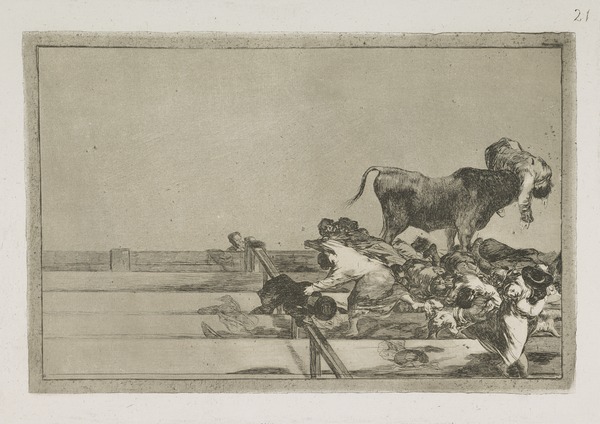|
Richard Jernigan -> RE: What's your opinion about bullfighting? (Feb. 24 2025 0:37:20)
|
One major change in the corrida since Hemingway's day, and since my introduction to the event, is the modern equipment and conduct of the picadores.
When we attended the Corridas Goyescas at Ronda we stayed at the Hotel Reina Victoria. I first stayed there in 1975, and have stayed there each time I have visited Ronda. The hotel has changed ownership, and the rooms have been remodeled, somewhat economically. It didn't surprise me to learn that all the toreros stayed there as well.
On the day of the Corrida, the toreros and their entourages gathered in the hotel's courtyard and along its extended driveway, forming up for the half-kilometer parade to the plaza de toros. There were horse drawn coaches with beautiful young women dressed as majas, the coachmen and footmen dressed a la Goyesca. With one exception, the toreros rode in open landaus in their trajes de luces occasionally acknowledging the crowd's applause with a nod, mostly chatting and smiling among themselves in a display of sangfroid.
The exception was the picadores. On the first occasion I was a little surprised to see them, burly muscular men in their distinctive costumes and hats, mounted on fine horses, energetic and fit. I walked beside one as we strolled to the Plaza, and mentioned his horse. He told me it was his regular mount.
Although the old Duchess of Alba had passed away, there were still a handful of aristocratic limousines among the walkers. Cayetano's brother Francisco had been the son-in-law of the Duchess. The corrida critic of El Pais lamented the cessation of her fiestas. We contented ourselves with the special menu at the Reina Victoria's restaurant, and the convivial gathering at the outdoor bar on the edge of the cliff.
At the Corrida, during Morante de la Puebla's first bull, I saw the change in mounts and conduct of the picadores. They appeared on their fine horses, not the glue factory refugees of the past. However, instead of the puny mattresses that formerly concealed their injuries, the horses now sported very effective armor. No horse was visibly injured, though the bulls charged them just as in the past. No bull was lanced more than twice, with what appeared to me to be limited violence. In the past they were routinely lanced multiple times, often savagely, until the matador indicated his satisfaction.
However, in the utterly corrupt Corrida of the next year, the bulls were so severely drugged that the picadores' roles were effectively superfluous.
At the hotel the night after the drugged bulls the bar patrons didn't spill into the outdoors, and the few who were there were quiet and withdrawn, according to Larisa. I stayed in the room and drank cognac, fearing that if i went downstairs I might say something impolite.
My understanding of the purpose of the banderillas is not to weaken the bull significantly. Rather it is to correct any faults. For example a bull that is seen to hook consistently to the left is "corrected" by the placement of the banderillas, to make close passes to the matador's left side somewhat safer.
RNJ
|
|
|
|

